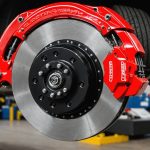Selecting the right tires for your vehicle is a critical decision that can significantly impact your driving experience. Tires are the only component of your car that directly contacts the road, making them essential for safety, performance, and efficiency. With many available options, knowing what to consider when choosing tires can ensure that you maximize your vehicle’s capabilities and maintain your safety on the road. This article will guide you through the various factors to contemplate, ensuring that you make an informed decision for your driving needs.
Understanding Tire Types and Their Performance
When exploring tires, it’s vital to understand the various types available and how each affects your vehicle’s performance. There are primarily four categories of tires: all-season, summer, winter, and performance. Each type is designed to operate optimally under specific weather and road conditions.
Also to discover : Essential Wheel Bearing Care: Safeguarding Commercial Trucks from Accidents
All-season tires are versatile, designed for moderate weather conditions. They offer a decent balance between performance and durability, making them suitable for year-round use. However, they may not perform well in extreme weather, such as heavy snow or intense heat.
Summer tires, on the other hand, excel in warm, dry, and wet conditions. They provide superior grip and responsiveness but lack the tread design necessary for winter driving. Thus, if you primarily drive in warm climates, summer tires may be the best choice for maximum performance.
Also to read : How can I recognize and avoid dangerous driving behaviors in others?
For those living in areas with cold weather and snow, winter tires are essential. Designed with deeper treads and softer rubber, they enhance traction and braking on icy surfaces. If you frequently encounter winter conditions, equipping your vehicle with these tires will significantly improve safety and driving comfort.
Finally, performance tires are engineered for enhanced handling and speed. They are ideal for sports cars or if you prioritize high-speed stability and cornering. However, they often wear out faster and are not suitable for winter conditions.
In summary, understanding the different types of tires and their performance characteristics will help you select the best option for your everyday driving needs.
The Importance of Tire Tread and Depth
The tread of your tires plays a crucial role in determining your vehicle’s performance and safety. It affects traction, handling, and overall driving experience. Adequate tread depth is necessary for proper water evacuation, which reduces the likelihood of hydroplaning on wet roads.
Tire tread depth is often measured in millimeters. Legally, most regions require a minimum depth of 1.6 mm, but many experts recommend changing your tires when the depth falls below 3 mm for enhanced safety. A quick way to check your tread depth is by using a penny. Insert it into the tread groove; if you can see the top of Lincoln’s head, your tires are too worn.
Different tire patterns also serve various purposes. For instance, tires with wider grooves are designed to channel water away from the contact patch, improving grip during rain. Conversely, tires with a solid surface provide superior performance in dry conditions.
When choosing tires, pay attention to the wear indicators often found in the tread. These indicators can help you assess when it’s time for a replacement. Additionally, ensure that the tires suit your typical driving conditions. If you often drive on gravel or unpaved roads, opting for tires with an aggressive tread pattern may be beneficial.
Regularly inspecting your tires for wear and maintaining the correct tire pressure will not only extend their lifespan but will also boost your vehicle’s performance and safety.
In conclusion, focusing on tread patterns and depths is essential when selecting tires that meet your driving requirements.
Tire Pressure: A Key Factor for Performance and Safety
Maintaining the correct tire pressure is crucial for optimal safety and performance. Under-inflated or over-inflated tires can lead to several issues, including decreased fuel efficiency, increased tire wear, and compromised traction, ultimately impacting your safety on the road.
Every vehicle has a recommended tire pressure specified by the manufacturer, usually found on a sticker inside the driver’s door frame or in the owner’s manual. It is vital to adhere to these recommendations, as they are tailored to your vehicle’s specifications.
Many drivers overlook the importance of checking their tire pressure regularly. Changes in weather can substantially affect tire pressure; for instance, temperatures drop during winter, causing the air inside the tires to contract and deflate. Conversely, warmer weather can increase tire pressure. Therefore, it’s advisable to check your tires at least once a month and before long journeys, especially during seasonal transitions.
Maintaining the right tire pressure not only enhances safety but also boosts performance. Properly inflated tires ensure better handling and responsiveness, allowing for safer cornering and braking. This is particularly important if you regularly drive at higher speeds. Moreover, the right tire pressure contributes to better fuel efficiency, helping you save money in the long run.
Ultimately, paying close attention to your tire pressure is an easy yet effective way to ensure your tires perform at their best under various driving conditions.
Seasonal Considerations: When to Change Your Tires
Understanding when to change your tires is essential for maintaining optimal performance and safety. As the seasons change, so too do the road conditions you will encounter. Depending on where you live, you may need to switch between summer, winter, or all-season tires to ensure your vehicle remains safe and efficient.
For those in regions that experience harsh winter conditions, it is recommended to install winter tires before the first snowfall. This is generally around October or November, depending on your local weather patterns. Winter tires are specifically designed to provide better traction, handling, and braking in cold and snowy conditions.
Conversely, once the temperatures consistently rise above 7°C (45°F) in the spring, it’s time to consider switching back to summer or all-season tires. Summer tires perform best in warm temperatures, providing better grip and handling on dry and wet roads. Leaving winter tires on during warmer months can lead to excessive wear and decreased performance.
In addition to seasonal changes, pay attention to road conditions. If you frequently drive in rural or off-road environments, you may want to consider switching to tires that suit those conditions more effectively. All-terrain or mud-terrain tires can provide the necessary traction and durability for rougher roads.
In summary, being proactive about changing your tires according to seasonal conditions is vital for maintaining safety and performance. Assess the weather and road conditions in your area and make the necessary adjustments to your tires accordingly.
Choosing the right tires for your vehicle is a multifaceted decision that requires consideration of various factors. By understanding the different types of tires, paying attention to tread depth, maintaining correct tire pressure, and being mindful of seasonal changes, you can significantly enhance your driving experience while ensuring your safety on the road.
Investing time into selecting the best tires will not only improve your vehicle’s performance but will also contribute to safer driving conditions for you and others. In the end, the right tires are a vital part of your vehicle’s overall safety and efficiency, so make sure to do your research and adapt your choices to your specific driving needs.











